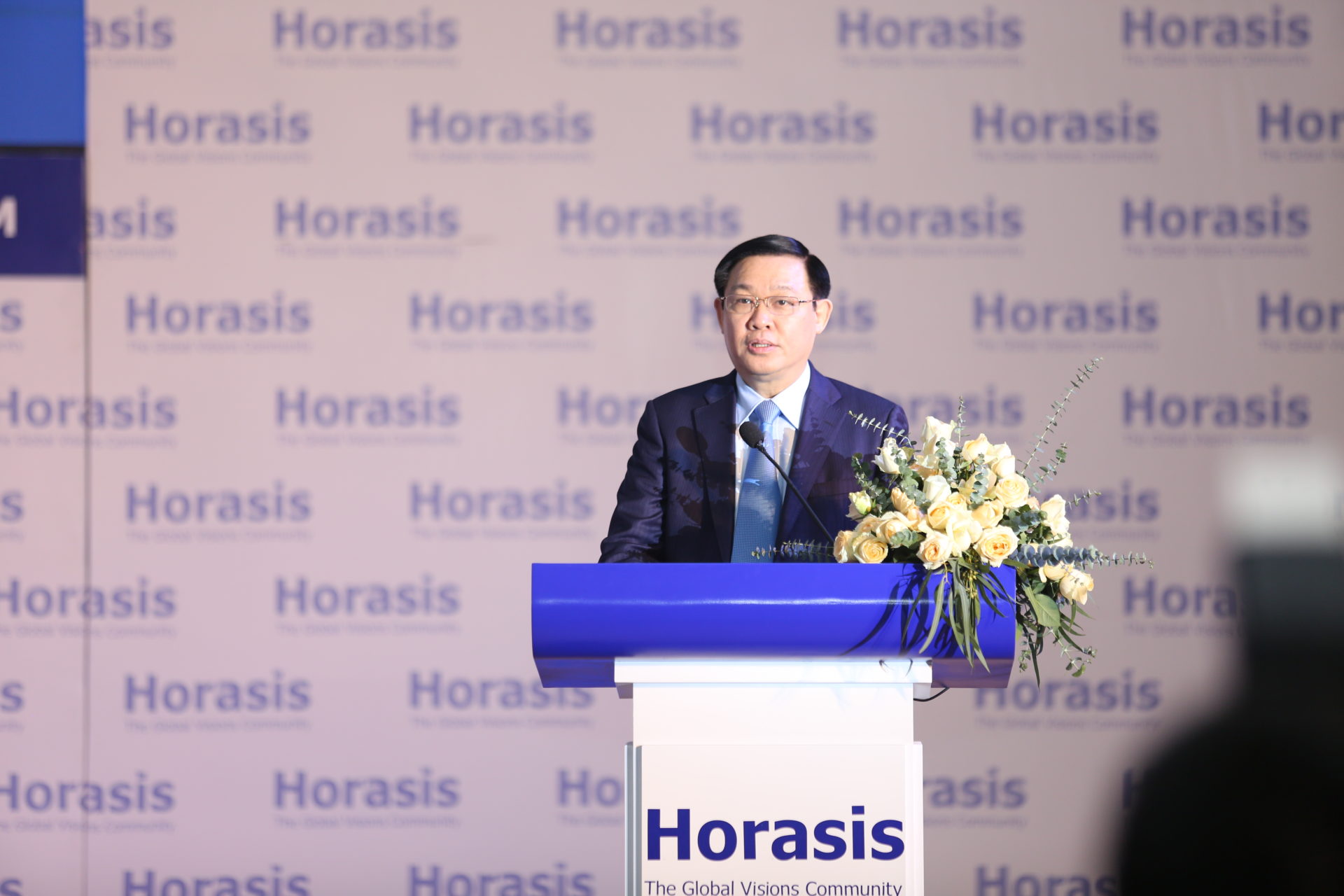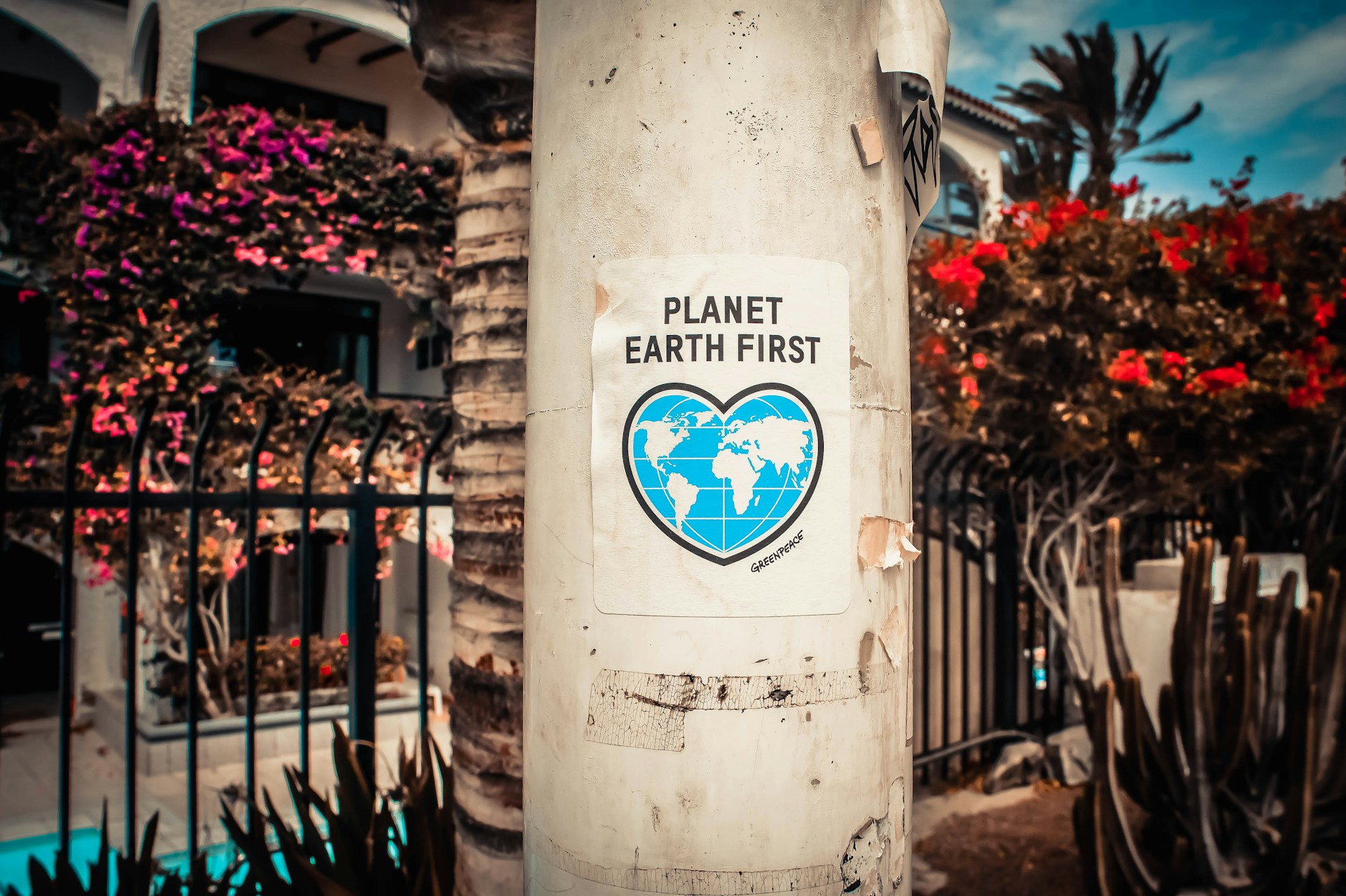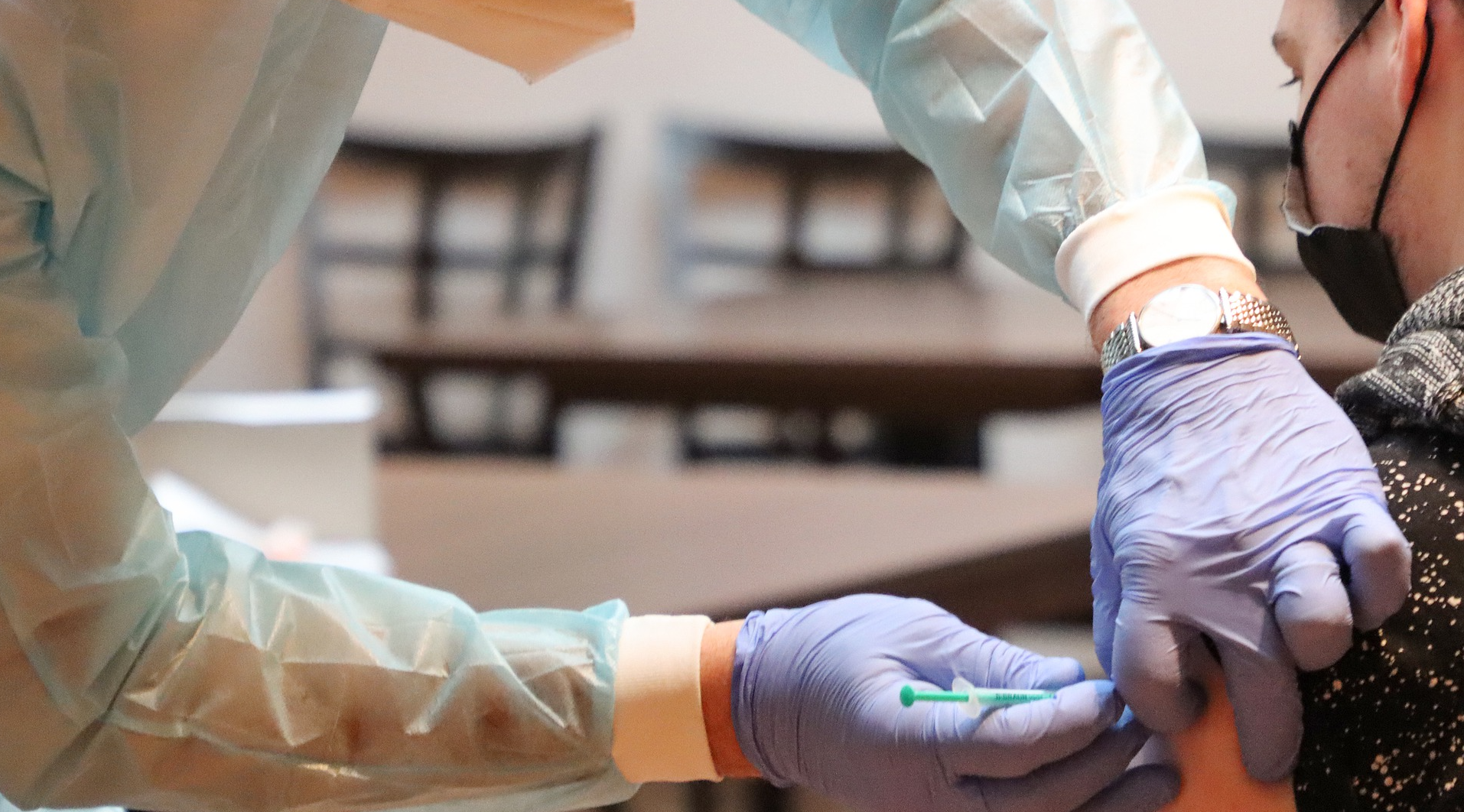Horasis Asia Meeting 2019, Bing Duong, Vietnam, 24-25 November
Horasis convened its fourth Horasis Asia Meeting in Binh Duong, Vietnam, over 24-25th November, 2019. On the evening before Horasis opened, the Binh Duong Provincial Government hosted a launching event to celebrate the signing of an accord between Binh Duong and the Association of World Trade Centers (WTC) to build a WTC in Binh Duong. This was important for Horasis as at last year’s Horasis Asia Meeting a WTC official had a conversation with Binh Duong officials to build this new venture for Binh Duong. Later, during the Horasis Asia Meeting, Becamex IDC signed co-operation agreements with a range of international partners to determine the management and operation of the WTC once construction is completed.
The Binh Duong Province had determined to move from labor-intensive to knowledge-intensive production via several economic plans. Placing the WTC as a center piece offers first a physical and second an intellectual focus for the plans of the province. The first aspect can be perceived via the architects’ images of the WTC close to the Binh Duong Administrative Center integrated with the metro service from Ho Chi Ming City and offering a multi-purpose complex of shops, office space, hotels and restaurants as well as a further convention hall; and the second aspect see the WTC acting as an integrating concept within the economic plans of the Province, being a magnet for global investments and know-how.

Signing Ceremony for World Trade Center Binh Duong New City
Talking at the Horasis Grand Opening, Vuong Dinh Hue, Deputy Prime Minister, Vietnam, said that even as global trade was undergoing a downward trend Vietnam managed to grow at 7 per cent in 2019. He noted the Government has pledged to facilitate foreign investors doing business in Vietnam, including Binh Duong, since “your success is our success”. He also noted that “our macro economy has been strengthened with interest rate and inflation controlled at a low rate. And it has attracted more than $30 billion of FDI and export volume, retaining a growth rate of 8 per cent with more than $263 billion in the first ten months of this year.
According to the statistics released by the provincial People’s Committee, FDI flows into Binh Duong have increased by 1.5 times, with many large-scale projects, since the Horasis event last year. And this year will be even better as greater number of domestic companies are participating in the Horasis meeting this year opined Binh Duong Party Secretary Tran Van Nam. He added the increased local participation shows the growing interest of the Vietnam ese business circle in international events like this, which supports local businesses to find international partners. One aspect was the development Smart City concept of Binh Duong, which is geared towards hi-tech manufacturing and services, green and smart urbanisation, meeting the demands of people and enterprises, establishing a knowledge economy and digital economy. To initiate the project, the province has coordinated with Eindhoven City in the Netherlands, as well as the South Korean city of Daejon and the World Technopolis Association.
Binh Duong has a unique approach to the concept of a smart city, describing it as an active, innovative, and connective eco-system in which every element is constantly changed and used said Tran Thanh Liem, Chairman, Binh Duong People’s Committee. Smart cities also represent an ideal way of improving living standards among the population. The plan to build a smart city in Binh Duong intends to utilise three vital sectors to improve peoples’ lives: the state, businesses, and schools.
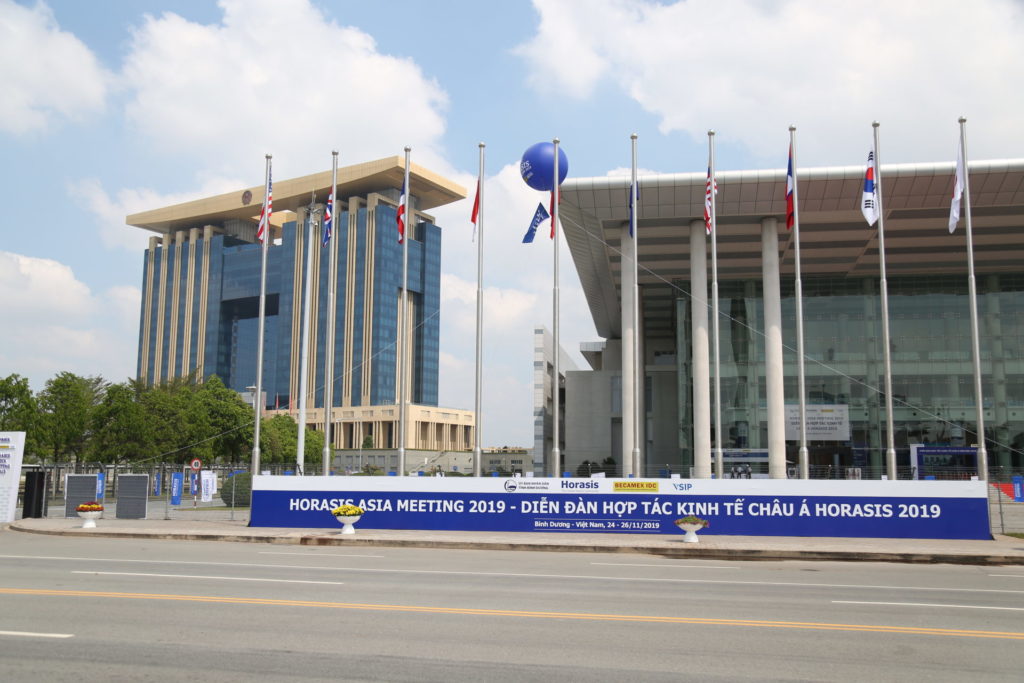
Binh Duong welcomes delegates of the Horasis Asia Meeting
The Horasis Asia Meeting was set up as a medium to encourage and facilitate discussion and collaboration between entrepreneurs, businesses, and governments from Vietnam, Asia, and other parts of the world so is completely aligned to the goals of Binh Duong.
Speaking during a plenary session discussing the Global and Asian Economic outlook, Don Lam, CEO of VinaCapital, Vietnam, said Vietnam ’s macroeconomic conditions remain strong: GDP growth is targeted for 6.6 per cent in 2019; inflation is under control; manufacturing is expanding; and foreign investment continues to flow into the country. He noted, although the stock market doesn’t reflect it, Vietnam has one of the most vibrant economies in the world, and its investment opportunities continue to be abundant.
Local dynamism, according to Freddy Boey, Deputy President, National University Singapore (NUS), can promote a lively, innovative start-up eco-system and promote the exchange of talents, technology and start-ups, especially between Singapore and Vietnam. Nguyen Van Hung, Chairman, Becamex, proclaimed, “We are delighted to establish strategic co-operation with NUS, Asia’s leading university, to support entrepreneurs and local talents in their entrepreneurial learning and pursuits.” Further cementing this effect, during the Horasis Meeting, Becamex IDC Corp, signed an MoU with the Ho Chi Minh City-based National Research Institute’s Applied Mechanics and Informatics Institute for the establishment of a hi-tech R&D centre in Binh Duong to develop research and applied science, promote technology transfer, and train hi-tech manpower.

Horasis – Inspiring our Future
While it is important to consider specific MoU to develop skills or trade in general, one has to deal with the global context, presently and into the future. Many panel speakers raised the current trade dispute between the US and China as a source of concern: for many manufacturers and traders who had been quickly cut-out of a supply chain; and because investors and incumbent players could not easily forecast the future as it was highly uncertain. Globally we have seen economic growth fall though we have heard that Binh Duong province has seen some growth. Several panels addressed the need for multi- or uni-lateral trade agreements, and also the stimulating role of large alliances such as the TPP (Trans-Pacific Partnership) that was dismantled by President Trump and reinvented as the Comprehensive and Progressive Agreement for Trans-Pacific Trade (CPTPP). This surely will provide a trade bridge, but may be too inclusive due to the many compromises called for by each member nation. As R R Shibu, Chief Executive Officer, Hatch Spaces, India noted “FTAs are not really free trade, we must look at the accruing benefits”. With a similar note Jonathan Moreno, General Director, Diversatek Vietnam, Vietnam suggested “There is too much political noise sometimes, we don’t notice the real work proceeding on the ground.” Charles Tang, Chairman, Brazil-China Chamber of Commerce & Industry, Brazil, reminded us that the present US/China issues began long ago, but serendipitously Brazil is benefiting presently and so will Africa with the increasing force of the Belt and Road mono- and multi-lateral agreements with China.” Bui Kim Thuy, Country Representative, US-ASEAN Business Council, Vietnam, raised an interesting point: Vietnam has engineered many uni-lateral FTA’s which permits them to judge the efficacy of future deals, even Belt & Road initiatives.
Yet it is not the local or the massively near-global trade deals that concern Asia, but the deals able to be constructed by ASEAN in its many guises: specifically, now RECP (Regional Comprehensive Economic Partnership). Thet Thet Khine, Member of Parliament, Myanmar, notes the completion of the Regional Comprehensive Economic Partnership (RCEP) will create the world’s largest trading bloc, covering 40 percent of global gross domestic product and a quarter of its exports. Essentially the now defunct TPP did not include China as a political way to pushback at China, but RCEP includes China, and until recently India.
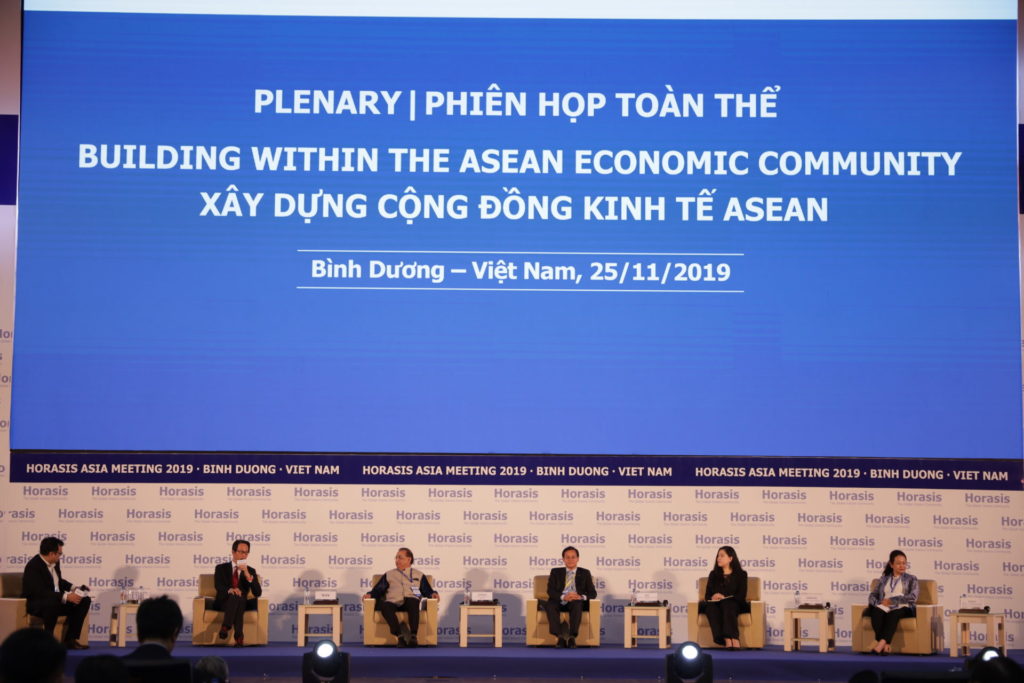
Plenary ‘Building within the ASEAN Economic Community’
The open-Asia concept was supported by So-Young Kang, Founder and Chief Executive Officer, Gnowbe, Singapore who highlighted ASEAN’s efforts to boost economic integration and to strengthen the open and rules-based multilateral trading system. If this can be done well, all Asia would benefit. Further, the dissent by India might derail the Free and Open Indo-Pacific (FOIP) Strategy that Japan is trying to promote, and who hope to extend this as a trade route, co-operating with India, into Eastern Africa as a counterbalance to the Belt and Road.
Nevertheless, China is increasingly absorbed into ASEAN and the extension to ASEAN+3 permits China to offer advice as well as materials in the form of cash and technicians. ‘China is increasingly investing in ASEAN economies,’ commented Wang Dong, Secretary General, The Pangoal Institution, China adding, ‘We are here to make a sustainable contribution to ASEAN and the whole of Asia.’
Developing on from trade panels, speakers noted that manufacturing needed power, and while fossil fuels had helped from the time of the Industrial Revolution we are increasingly turning to renewable sources. Yet, we had to note that the growing middle classes and their children will need more electrical power to run their domestic appliances and recharge their phones, and increasingly their cars.
There is indeed a fundamental conflict growing from the Western nations and increasingly noted by Eastern nations. It is the illusive solution to growth and reduction of poverty, increasing consumerism that depletes our resources, and the increasing demand for (electrical) energy that raises pollution levels everywhere. And, as the number of cars and trucks increase in mega-cities across Asia, the pollution increases due to the burning of petrol and diesel fuels, as well as tyre and brake dust.
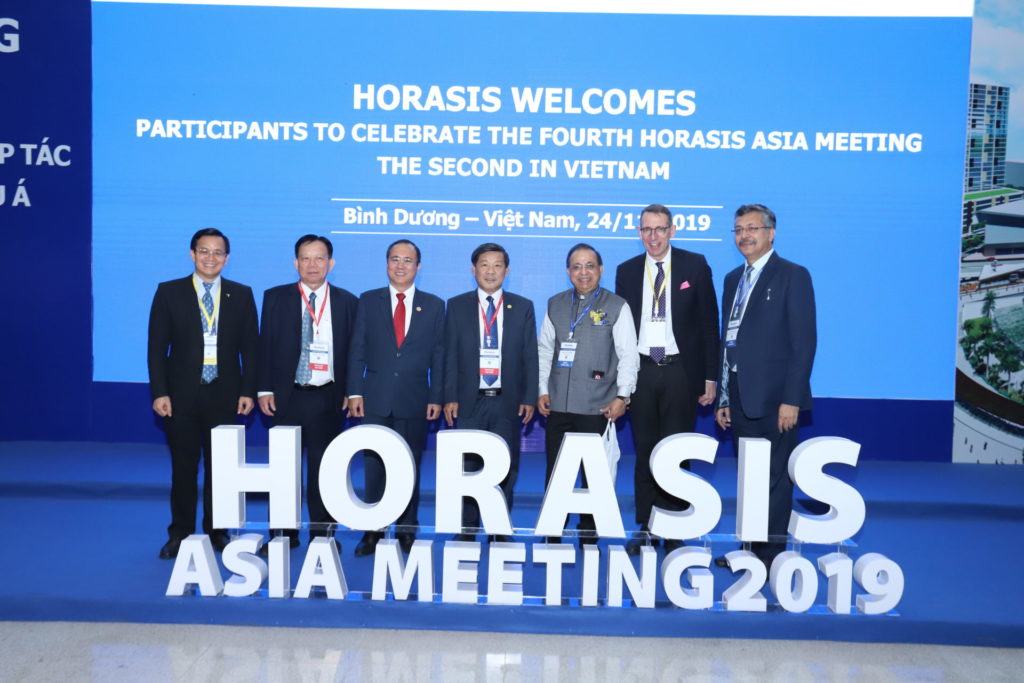
Horasis welcomes participants to celebrate the fourth Horasis Asia Meeting
In discussions on the ‘Family Businesses in Asia’ panel Diana Chou, Founder and Chairman, Dragon General Aviation Group, Hong Kong, asserted “sixty-seven percent of businesses in India are family-owned.” And Nguy Xuan Anh, Managing Director, NIM Consulting Group, Vietnam, noted that across Asia these family businesses operated differing business models from ‘simple family, simple businesses to globally operating firms with ‘complex business, complex family.’” In contrast, firms in Europe and the US are often run by recruited CEOs even if guided by the family head, and thus may be more attuned to the pressures to be ‘green’ and to reduce pollution. It is possible that the Western firms have received more publicity on climate change issues and has taken them into account.
Speaking to the final plenary session on Driving Globalisation Fernando Gil De Bernabe, Chief Operating Officer Asia Pacific, Japan and Greater China, Cisco, Singapore agreed, noting “digitalisation in general, 5G, and the Web of Knowledge will demand more electricity.” He was quoting this in the context of the need to be greener and more conservative of our resources. “Perhaps Asia will create its own solutions” he concluded. Neatly Hiroshi Komiyama, President, Kitakyushu Asian Center for Low Carbon Society, Japan promoted both greenness as well as offering to us the opportunity to visit Kitakyusho where the next Asian Business Meeting will be held over 29 – 30th November 2020. He offered a a warm welcome to visit Kitakyushu, and stated that globalization can be re-invented to take account of all the necessary aspects to combat climate change. The eastern Province of Kyushu is a good example. It cleaned up its shoreline and fish reappeared: now there is even industrial tourism.
Key take-aways:
First comes from the endeavors of Binh Duong over the years. Create good plans with achievable short-, medium- and long-term goals. Look for global best-in-class and create vigorous joint ventures. And all the time encourage the Binh Duong provincial committees to explain to the local population that without their good will and endeavours the plans will not materialise.
Second is about Asia as a whole. At the moment trade and finance are badly structured, partly due to supply chain disruption – the economic downturn is depressing and the high uncertainty seems to hinder positive developments. The Horasis panels noted how there are good omens across all sectors.
Finally, taking a quote from Sanjay Kirloskar, Chairman, Kirloskar Brothers, India: “the best is yet to come. Asia is the new engine of globalization.”
Featured photo of Vuong Dinh Hue, Deputy Prime Minister of Vietnam
